It is a new year. 2024 may be behind us, but if the Oscars can wait until April to look back, can’t I take a few days?
Last year this time was garbage. I was garbage in the dumpster. I was laid off two days after Christmas and the freelance that actually paid totally dried up in the new year. My body invented all sorts of problems, mundane and bizarre, as a way of airing out the stress — flu, sore throat, heart pain, even one night where I was convinced in a half dream state that our upstairs neighbor was piping toxic gas from her vent into our bedroom. So convinced that I woke up, ran to the bathroom, and made myself throw up several times while still in a partial sleep state.
My boyfriend and I were in the process of moving our bedroom from one room to another, but had only relocated the bed when the sickness hit. So I slept alone for a week in a cold room with bare walls, no lamp, no rug. Felt like every night I went to bed in an empty airplane hanger and every morning I woke up in the middle of the ocean.
Somehow through it all I still crammed like 20 movies in, yoked as ever by the pressure of the horrible end of year catch-up season. It’s a common thing for movie/book lovers, and even necessary for critics/writers. But it’s loathsome each time. Like dumping prime cuts of beef and succulent vegetables into a brackish, tapwater broth. Forcing all these great movies, all varied countries, genres, styles, into such a truncated span is like cooking them on a range — the liquid is expelled, fat breaks down, protein denatures. They lose their integrity, their elasticity, becoming indistinguishable, gummy chunks knocking around the pan. It homogenizes them, even more than happens at a film festival, because the atmosphere is heightened at a film festival. You stumble delirious into theater after theater malnourished and on no sleep. Dizzy with anticipation. Beautiful people surround you, excited chatter, fevered speculation. Unfamiliar sights and smells stun you into a dumb, receptive state. End of year cramming season, which is the first step in the march toward end-of-year ranked list season, something I hate even more, is not heightened. It’s dull and domestic. Luxuriant films rich with exotic subjects and sensations are spilled around the dirty dishes and unmade bed like laundry to be folded. Titles to be checked off a list so we can all make more lists. Horrible!
But I understand that fire many get to catch up on titles everyone’s talking about, and to seek out things no one’s talking about. The fire’s comes back to me each year since I started writing about film and even before that, when I was just someone who liked culture and wasn’t on its meager payroll.
This year that fire came back but felt different. It was the fire for that fire, an anticipatory eagerness. But the real feeling never came. I saw so many films this year. A few bad one but so many great films, even a small handful of perfect films. Why should I cram? What I really want to catch up with will rise to the top in time, after all the bright and blinking objects fade away. This year I was dogged by a particular film I watched during last year’s cram. I thought about it a lot throughout the year, whenever my mind went to films I feel I should but don’t particularly want to watch. David Fincher’s The Killer. What a totally pointless, bland, boring, utterly unremarkable movie. It still pains me I won’t get those hours back, hours I could have spent thinking, alone in a room. Staring out the window. Walking down a wooded path. Sweeping the patio. The ur example of a movie you (I) watch because of who made it, and if you’d flipped it on at 11:30 on TNT in 1999 you probably would watch a polite 30 from over the fold of the People crossword and go to bed.
Not this year. The undistributed, obscure, under-seen films that jumped out from interesting critics’ lists can wait, and I’m not going to waste my time on the dullards that hover around the top of all the institutional critics’s lists. The Fall Guy top 10? Trap? Anora?? Janet fucking Planet? Stand up.
I was content with 16 movies I’d seen already by October. In the time since I’ve watched three more that turned out to be incredible. I didn’t travel to any film festivals, but I did attend more local repertory screenings than I ever have this year, and that’s where over half my favorites came from. Go through the local listings until I find something I’d never heard of (extremely easy now in L.A. with the Scenes app). Or pick the film that seems like it screens the least. Also crate digging on Tubi, Effedupmovies, Rarefilmm, ok.ru, the Lifetime Movie Club, of course reading reading reading for recommendations.
Was it a good year for movies? However good you think any given year was is roughly proportional to how hard you tried to see good movies. Dune Part II in your top ten? Grow up and go somewhere besides an AMC. You aren’t going to watch ten great movies in any year span there. Dig! Illegally download. Peer to peer share. Okay here are the films I saw and loved, the ones I think were the worst, some new to me’s, books, and songs if I feel up to it.
The Best
Here
My favorite film of the year. Would not argue that Bas Devos’s formal or narrative assemblage is more provocative, intelligent, or ambitious than films on this list by directors like Jia Zhang-ke or Albert Serra. This is personal. Here resonated in the innermost core of my being, felt like it was transcribed from my interior scroll. I loved Devos’s previous film Ghost Tropic. The age and bearing of its protagonist, her gentle inner rhythm, the quiet dignity of her journey and its gradual effects on her. The mythic, poetic dimensions that journey can accommodate because of its rough and tender simplicity. Here is more of the same, but the blade that pricks the skin is shorn even sharper. The refinement of the finish here is exquisite. Characterization done in near silence. The hypnotic hum of the forest and the cities which crop up within it pervading the dark, chapel-like hallow of the movie theater. Small gestures like making food for another person and expressing excitement to see them. The bright and pale shade of green which bathes this film. Would play beautifully with Good One. Extremely poignant and life-affirming cinema.
Do Not Expect Too Much From the End of the World
The smartest movie of the year and one of the funniest, most crude and most fun. Angela probably my character of the year. Watching Ilinca Manolache shout, exclaim, maraud around, is like a blast of fresh air in the dank cave of quiet, glowering, suppressed arthouse cinema heroines. She’s as loud and angry and funny as life on the street, once you got out of your car and out of your life and bubble, the life cameras are so rarely trained on. Jude is experimenting with the essential components of cinema - form, light, and language. And he has real, elaborate ideas. You can’t explain what this movie is about in under five sentences. It’s actually pretty difficult to capture what’s cooking after a single watch. It’s incredibly daring to make a film of ideas in which the ideas aren’t exclusively embedded in the story. That’s to say, the characters actually explicate facets of the ideas and argue about them. Daring because ideas pulled from the head often wilt and begin to rot on their way to characters mouths. We don’t like to suspect that characters are mouthpieces for their creators. What does a movie director know about anything? What does any one person know about anything? Conveying ideas in a diagonal fashion like that just raises people’s hackles, maybe it tickles the folk instinct against being sold something. We see repackaged ideas — doesn’t matter what they are — and narrow our eyes at them. Jude’s ideas are so sharp. About Neoliberalism, austerity, the failed promises of post Ceaușescu Romania, the forced dependence Germany has cultivated in its neighbors, a toxic exchange of increasingly precarious forms of labor for increasingly weak capital, the way it has quietly asserted itself as the de facto suzerain of the EU, the logic of optimization that has re-programmed all of our minds but the intrusions of chaos and serenity that can't ever be fully prevented. It’s also the way he conveys his ideas — direct, relentless, playful, with a characteristically Eastern European down spin of antagonistic self doubt. That earns our trust back. A character like Angela earns it without even trying.
This is a great review of the film.
Speaking in Tongues: Take One
I discovered the work of Christopher Harris this year through a Los Angeles Film Forum program. His patchwork, heterogenous, homemade shorts unspool like process cuts, building upon themselves, layering grain upon grain of texture until you have a dense thatch of material. Each film plays as if on ceaseless transit through his mind and through history. They aren’t fixed objects like museum pieces, polished to be adored. Experimental assemblages like Reckless Eyeballing and Halihmufack are alternately cute, hilarious, and easy to watch, and totally astringent and unyielding. Speaking in Tongues spools together images of the incarceration archipelago, the surveillance state, anti-Black state violence, popular and insurgent Black uprisings, Hollywood films, trashy commercials, the arthouse, and industrial productions into something strange and alluring.
Here are LA Film Forum’s wonderful notes on the program.
Red Rooms
I love seeing them lose everything! Phenomenal performance. Real perversity and real compassion, pressed tightly against each other. The extreme beauty of an actress actually used meaningfully — against the audience. Dangerous ideas, playful and confrontational, rigidly controlled. Many comparisons to Fincher, and to Lynch (baffling) — but it’s more Chabrol and Breillat.
This is a great interview with director Pascal Plante.
Misercordia
Totally beguiling. Sexy, cock-blocked, welling with potency, verdant, provincial, funny in punishing, acidic way. Menacing, egalitarian in its wickedness and cynicism. Fabulous performances from an entire cast of actors who don’t look like the actors you see in most movies. Far deeper and more rich than Stranger By the Lake, which is a masterpiece. The kind of film that gives you the sense of betrayed urgency that a total master has been right under your nose for decades.
This is a great review of the film.
The Wrong Life Coach / Mommy Meanest
It’s always a fabulous year for Lifetime movies, though I will say with a note of concern that there were notably fewer movies with crazy titles …. I loved Lonely Crime Fanatic but why did that stand out among all the My Husband’s Girlfriend and Deadly Secret blah type titles. We need Doug Campbell 2015-2020 type titles back, because even Doug’s movies got titles like Be Careful What You Say this year. Anyway The Wrong Life Coach is the 26th film in Vivica A. Fox’s The Wrong… series, many of which are directed like this one by the legendary David DeCocteau. Lifetime inking a multi-picture deal with the director of 1313: Cougar Cult, they know they’re making nasty stuff.
As for Mommy Meanest, come on. It’s Lisa Rinna, who’s in, on the right day, my pick for the best Lifetime movie of the ‘90, Another Woman’s Husband. It’s edgy, it’s very funny, Rinna’s total lack of subtlety and uncanny visage give her scenes with normal actors a surreal, sometimes horrific quality that pops off the screen. Watching this makes you yearn for the days when teen soap stars and the actresses who played their moms were on Lifetime movies every other week. Why didn’t we ever get a Madeliane Petsch crazy cheerleader or Tyler Posey manipulative pool boy movie? Nowadays when real stars cross over to Lifetime it’s too often for bullshit biopics and somber ripped from the headlines stories… no one wants to play an evil carpool mom anymore.
Malqueridas
From my review from the Los Angeles Festival of Movies, via In Review Online:
Malqueridas is the result of a staggering amount of work from director Tana Gilbert Fernández and editor Javiera Velozo, yet Gilbert Fernández didn’t shoot a single inch of film. The doc was cut together entirely from small fragments of image and video captured in secret by inmates of San Joaquín, the largest women’s prison in Santiago (recording devices are banned within the Chilean prison system). Gilbert Fernández told Cineuropa last May that she “collected more than 4,000 photos and nearly 2,000 videos” that were then poured through, absorbed, and sequenced into a loose narrative. In an effort to curate a kind of material archive of these women’s hidden lives, to create presence where the state has worked to ensure there is only absence, Velozo and Gilbert Fernández hand-printed each frame of the film’s 75 minutes, then re-digitized and re-synced all 32,000+ prints. Carrying this information into Malqueridas results in a stupefying viewing experience. Each wrinkle, light flare, and rough patch of pixels on the various photo scans and vertically-oriented videos make the precarity of the women’s position tangible.
Malqueridas is a radical act of directorial self-effacement. Gilbert Fernández puts the act of image-making in the hands of her subjects — subjects whose very personhood has been eclipsed by the impenetrable battlement of the prison wall. Of course, she, Velozo, and researcher Alejandra Díaz played a critical role when it came to selecting which images, videos, stories, and subjects make the final cut, and in what context. But the film’s script was handed off to her incarcerated collaborators as well. Malqueridas takes an observational approach to the women’s stories, employing a recently emancipated inmate, Karina Sánchez, to narrate all their stories. These stories arrive the same way the images do: through a looping process of translation and transformation. The recurrence of certain memories, situations, and family dynamics make it clear that some “characters” are telling their stories asynchronously and in fragments, but because Sánchez does all the narrating, there’s no way to gain a stable sense of identity. It could be just a few women experience so much hardship; very likely, it’s most of them experiencing the same systemic injustices.
The Beast
Léa Seydoux one of the performances of the year. George MacKay can do everything Harris Dickinson can do but more and better. Genuinely love how uneven this movie is. Spiky, astringent, like a spoonful of vinegar in a glass of milk. A perfect adaptation of the source material because it takes on what Bonnello believes to be its essence, pushes that to the absolute max factor, throws everything else away without remorse, and everything else built is utterly new and strange, pushing the original ideas to athletic extremes. That opening scene is so extremely strong. The past is a bit turgid, the future a little cringe, but the present is so effectively harrowing that it magnetizes its bookends, and they vibrate with life. So thrilled to see Guslagie Malanga in such an interesting role after her fantastic performance in Saint Omer.
My interview with Bertrand Bonnello in BOMB.
Horror in the High Desert: Firewatch
I don’t think this is the best of these films I just love what Dutch Marich is doing so much I had to include. I saw a lot of glossy, big & small studio horror films like The First Omen and Stopmotion and Smile 2 this year that were very nice. Very fine pictures. But I don’t know, it’s me not horror lately, everything studio has begun to blur. B-list 26 year old actress gives a great performance. Zulawski reference. De Palma reference. The word bonkers. Precociously splattery gore. I’m tired. Watching horror movies has become like taking my stress gummy (vitamin not weed, I have self respect) — I just fade out and nod off. I need a massive formal cleave to care at all these days. Short film. DIY film. Self released, released on TikTok, leaked film. Silent film, a film with no context. It needs to be very very different to move the needle at all. What Dutch is doing is in a league of its own. Like Damien Leone, whose new Terrifier film I also really enjoyed. I have a hard time putting my finger on what the Horror in the High Desert movies do differently that attracts me so much. A couple things that come to mind are Marich’s use of silence and stillness. These states aren’t just used to ramp up to the sudden crescendo of a jump scare, but define the mood of all three films. You are in the deep wilderness. Beauty and serenity comingle with paranoia, punishing isolation, and the cruel indifference of nature. The classic networked narration common to found footage is here and isn’t spectacular, neither is the final scene in the trailer, after all that anticipation. But Oscar’s journey along the tracks, through the tunnel… something about the passage beyond the mouth of the tunnel fills me with dread.
This is a really good piece on the film.
All We Imagine As Light
From my review in Slant:
“The sky is blue in Payal Kapadia’s revelatory All We Imagine as Light. It’s in the heathered cornflower blue of morning, still cottoned over with sleep, as well as in the gnashing, striated blues (cobalt, steely Carolina, rusted-over aquamarine) of the afternoon grind. And when the sun gives way to the horizon, indigo blossoms like ink in a well of midnight.
The hues of Kapadia’s blues run so deep that they bleed across the entire canvas of the film, from the support beams of a lumbering pedestrian highway crossing where two characters share a wordless intimacy, to the panels of a bathroom door where blue towels are scrubbed over a blue bin, to the workwear and casual dress of her hospital-worker protagonists. And, of course, the sea, where they all end up by the end of All We Imagine as Light.
That Kapadia is able to render such a richly varied emotional texture from an aesthetic palette this constrained and contemplative isn’t merely a testament to her skill as a filmmaker; it’s an emblem of the process that powers the core of All We Imagine as Light. This is fundamentally a film about Mumbai. Kapadia evokes her adopted home with as much vivid clarity and bracing honesty as Jia Zhang-ke does Shanxi, or Elena Ferrante does Naples, because she has taken its animating principle—the reconciliation of opposites—as her own.”
The Moon Will Contain Us
This is a wonderful short film by Kim Torres shot in Manzanillo, the tiny Mexican village of her father. At a screening at Now Instant Image Hall, Torres told a story about how, when visiting the village, she noticed a group of kids passing by her father’s place again and again. She eventually discovered that the same group of kids, the village’s only kids, spend days walking in a circle around the whole village. While orbiting they fight, tell stories, make up games and characters, etc. This rhythmic looping with small variations, a kind of live accumulation, inspired her to make this film. It’s gentle, opaque, poetic, and dense with feeling.
Chime
Short, terrifying, brilliantly acted, staggeringly shot in several wides and tracking shots. The lack of context, the real star. Everyone stop explaining everything.
No Other Land
The most urgent documentary I saw this year. Fruit of the collaboration between journalists Yuval Abraham (Israel) and Basel Adra (Palestine). It’s explosive, violent, horrifically upsetting. Israeli settler assaults Masafer Yatta, the collection of West Bank villages that Adra belongs to, rain down like rocket fire over the course of 2+ decades. Playgrounds bombed, schools shelled, homes evicted on charges made up by the IDF on the way over. The development of their relationship, Adra torn between protecting his life and family’s lives and pursuing the documentation and transmission of bare truths. Abraham risking his security at home by traveling to the West Bank and embedding with Palestinians, but those same people extremely slow to accept him, if they do at all. Much more than a document of atrocities. The way these directors were treated by the German government and left totally unsupported by the Berlinale still disgusts me, wretched festival. A stain on any critics’ reputation who goes this year.
This is a great piece on the film.
The Urania Trilogy
From my review in In Review Online:
“In the ongoing writing of the history of film, only a few summative propositions have ossified into matters of fact. The notion that the introduction of sound to the apparatus of cinema “changed everything” is one. But did it really? The influential Japanese film critic Shiguéhiko Hasumi has argued that “the medium of film has not yet truly incorporated sound as an essential component of its composition.” That, in other words, film remains primarily a medium of moving images, with sound recorded separately and collaged in as an element of the mise-en-scéne the same way actors, props, and sets are instrumentalized by the camera.
The latest feature film by the musician Tav Falco raises a fascinating and generative question along these lines. Not how film might transform were sound made a constituent particle of its atomic structure, but whether the largely abandoned aesthetics of silent cinema are the mere byproducts of their era’s technological limits or something distinct, the origin point for craft templates just as fertile for experimentation in 2024 as they were in 1914. The Urania Trilogy makes a compelling case that the aesthetic and even narrative forms pioneered by early masters like Louis Feuillade and D.W. Griffith remain ripe for exploration, remix, and reclamation. Consciously, that is, for as Hasumi contends, “all movies are but variants on the silent film” — whether they know it or not.”
The Feeling That the Time for Doing Something Has Passed
So fucking funny. Laughed more at this movie than any other movie this year last year or the year before. Joana Arnow is a genius. I thought Lena Dunham’s New York has shuttered. I know Arnow must have her references but she comes across as utterly unique. Not just her bone dry, self-negating sense of humor, but the form that follows — the timing and sequence of scenes is genuinely beguiling, Proustian. Why isn’t she being talked about like Woody Allen or Lily Tomlin? This is cinema where the unique charm of the writer-performer dictates the pacing, look, feel, everything of the movie. She could do one of these a decade and it wouldn’t get old. It would on TV, though.
Green Border
The best political fiction film I saw this year. Insanely triggering, galvanizing images. Agnieszka Holland at 76 puts filmmakers 1/3 her age to shame venturing work half as daring in countries 10x as accommodating.
From my interview in BOMB:
“It was the first analogy that we all felt — the activists, the locals, myself too — when it started. That area has many unspoken memories and guilt about what was going on during the Second World War. Sobibor, the death camp, is in that area. There was a revolt within that camp, one of the rare instances where prisoners in a Nazi camp organized a massive revolt. Most of them were shot on the spot, but a few hundred escaped into the forest. All but a handful died. They were either captured by the SS or denounced by the local population and given up to the German police.
So even the first year of the refugee crisis, these images were inescapable and undeniable. You see people hiding in the forest, their eyes full of fear and suffering; you go to the forest to pick mushrooms and have to step over a dead body; you see military tracks that have torn up the forest floor, trucks packed with women, men, children who are being taken who knows where. It is astonishing how we are repeating not only the mechanisms but also the images of the past.”
Queer
Luca is great at not really finishing movies. All the ones I’ve loved - Suspiria, Call Me By Your Name, even Challengers, which was fine, either feel incomplete or a bit more like sketches than finished products. But that often gives his work a sensate, reactive quality, where it turns around in your mind, recombining itself into different shapes without ever becoming fixed. Queer feels close to Suspiria in its confidently unexplained, arcane symbology, its surges of naked feeling amid dense, inscrutable plot maneuvers, freewheeling stylistic flourishes that more often point inward than outward, deepening the text, tending to its mystery. I still don’t think Daniel Craig it is genius casting an actor in this particular role who both has crazy DL vibes and whose screen persona has come to be defined by wanting — to be seen, to be liked, to transcend, to reach artistic climax on screen. But who always fails. So was casting Drew Starkey, who is at his most potent in Outer Banks when he’s saying and doing nothing.
Afternoons of Solitude
Albert Serra. The unspeakable. The edification and adoption of icons of defeat and ascension under fascism. The desire and repulsion of pure masculine fantasy, and national fantasy. Through an astringent refusal of formal decoration and the complete neutralization of any line, cut, or sound cue that could catch and begin to cohere into meaning, Serra reveals the pathetic cowardice of the bullfighting tradition, where it takes 12 men and 100 sabers to convince an audience that man can conquer beast, and also forces you into submission before the radiant, ancient, and unlimited power harnessed by a single, exceptional man.
Between the Temples
Really funny and warm and sweet. I ache so badly for romantic comedies and Carol Kane and Jason Schwartzman are both so charming, idiosyncratic, and sincere here that I was able to put up with Sean Price Williams playing the hits of his horrible, cloying style — the incessant stylistic flash bangs and intrusions, extreme closeups, split diopter shots, fast forwards, freeze frames, light leaks, chaotic montages. Why am I being reminded of the artificiality of the form during a romcom? I understand that the idea is to pick apart the form so completely and shove it in your face so that the opposite effect is achieved — total immersion in the sound and feel of a scene, rather than just watching it, if it were, like most romcoms, just alternating between long fixed takes and over the shoulder/reverse shots. That kind of immersion does happen but not every time here. Sometimes the form is gratingly ironic and distant and overly intellectual when the material is just trying to be sweet and sincere. But still…!
Caught by the Tides and Last Summer
These are, at least for now, among my least favorite films by Jia Zhang-ke and Catherine Breillat, two of my very favorite directors. That’s just to say how unbelievably good all their other films are. Also just my taste. But they are both exquisite. Caught by the Tides’ heterogeneity, its drift away from narrative cogency, its solemnity and recombination of old and new mateiral. Last Summer’s sleek restraint, Breillat’s menace tempered by a posh new visual luster and melancholic new pace. They both stand out among their director’s previous films, qualities to think about and revisit.
This is a great piece on Breillat.
Stress Positions and New Strains
My interview with Theda Hammel in BOMB here and my review of New Strains in In Review Online here.
Young people living in close proximity in New York during COVID… extremely funny, directed by shockingly young people. Styles of humor that are not Safdie, Dunham, Apatow, Dimes, or that “love that for you” Meg Stalter/John Early thing … both of these films feel drawn from very particular subcultures that have held on to their own cadences and vocabularies of slang, that have resisted the homogenizing force of social media.
The Rest
Honorable Mentions
Good One, dir. India Donaldson
The Deliverance, dir. Lee Daniels
Hard Truths, dir. Mike Leigh
Dildotectonics, dir. Tomás Paula Marques
Exhuma, dir. Jang Jae-hyun
Lonely Crime Fanatic, dir. Kaila York
In a Violent Nature, dir. Chris Nash
Madame Web, dir. S.J. Clarkson
For here am I sitting in a tin can far above the world, dir. Gala Hernández López
Art College 1994, dir. Liu Jian
The Gene Pool, dir. Gabriel Rodriguez-Fuller
Riddle of Fire, dir. Weston Razooli
The People’s Joker, dir. Vera Drew
Lemon Tree, dir. Rachel Walden
Wicked, dir. Jon M. Chu
Gasoline Rainbow, dir. Bill Ross IV and Turner Ross
Confessions of a Cam Girl, dir. Siobhan Devine
The Worst
Maria, dir. Pablo Larraín
Humane, dir. Caitlin Cronenberg
Coreys, dir. Dan Streit
Kinds of Kindness, dir. Yorgos Lanthimos
Life of Belle, dir. Shawn Robinson
The Seeding, dir. Barnaby Clay
I Saw the TV Glow, dir. Jane Schoenbrun
Mid, sick of hearing about it
Trap, dir. M. Night Shyamalan
The Substance, dir. Coralie Fargeat
Anora, dir. Sean Baker
Juror #2, dir. Clint Eastwood
New to me
A Question of Silence, dir. Marleen Gorris
The Lighthouse, dir. Mariya Saakyan
Beaver Trilogy, dir. Trent Harris
Halimuhfack, dir. Christopher Harris
NE Corridor, dir. Joshua Gen Solondz
To Live, dir. Zhang Yimou
Music Box, dir. Costa-Gavras
Lucky 7, dir. Harry Winer
Apaches, dir. John Mackenzie
Madame’s Cravings, dir. Alice Guy-Blaché
Punitive Damage, dir. Annie Goldson
Marked Woman, dir. Lloyd Bacon
Oasis, dir. Lee Chang-dong
Harriet Craig, dir. Vincent Sherman
Rat Film, dir. Theo Anthony
Murrain, dir. John Cooper
L’Intrus, dir. Claire Denis
Mist, dir. Kim Soo-young
A Girl Named Sooner, dir. Delbert Mann
The Lords of Salem, dir. Rob Zombie
A Woman Alone, dir. Agnieszka Holland
The Boogey Man, dir. Ulli Lommel
The Big City, dir. Satyajit Ray
The Strange Case of Angelica, dir. Manoel de Oliveira
I Used to Be Darker, dir. Matthew Porterfield
The Grim Sleeper, dir. Stanley M. Brooks
Caroline?, dir. Joseph Sargent
Ninotchka, dir. Ernst Lubitsch
The Victim, dir. Herschel Daugherty
What Are Friends For?, dir. Stephen Gyllenhaal
Andrea’s Story: A Hitchhiking Tragedy, dir. Robert Mandel
Haru, dir. Yoshimitsu Morita
Ko-Ko’s Haunted House, dir. Dave Fleischer
Candy Mountain, dir. Robert Frank and Rudy Wurlitzer
Senritsu Kaiki File Kowasugi! File 04: The Truth! Hanako-san in the Toilet, dir. Koji Shiraishi
Toolbox Murders, dir. Tobe Hooper
Forgetting Dad, dir. Matt Sweetwood and Rick Minnich
Shopworn, dir. Nick Grindé
The State I Am In, dir. Christian Petzold
Books I loved
Goodbye Without Leaving, Laurie Colwin
Lolita, Vladimir Nabokov
Fraud, Anita Brookner
Nine Stories, J.D. Salinger
So Long: Stories 1987-1992, Lucia Berlin
The Pastures of Heaven, John Steinbeck
Pale Horse, Pale Rider, Katherine Anne Porter
Dark Property, Brian Evenson
The Blithedale Romance, Nathaniel Hawthorne
Dogtown, Mercedes Lambert
Don’t Tell Anybody the Secrets I Told You, Lucinda Williams
The Night Swimmers, Peter Rock
Vengeance is Mine, Marie NDiaye
Notice, Heather Lewis
Music
“Snake Plant (The Past is Still Alive)” and “Alibi,” Hurray for the Riff Raff
“Choose Drugs,” “My Enemy,” and “Supermodel,” Juliana Hatfield
“Cinquante Six,” Ali Farka Touré
“Angel of My Dreams,” Jade
“Crawling Back,” Roy Orbison
“Hardly Ever Smile,” Poison Girlfriend
“Revelator,” Phosphorescent
“The Last Word in Lonseome is Me” and “Willie,” Sammi Smith
“Life Is,” “The Last Year,” and “Crossing,” Jessica Pratt
“Nutshell,” Alice in Chains
“Matthew 24,” Kitty Wells
“I Would Now,” Evangeline
“Football,” Youth Lagoon
“Omakase” and “Only One,” Cassandra Jenkins
“Town Without Pity,” Gene Pitney
“Little Girl Blue,” Nina Simone
“Out of Reach,” Gabrielle
“A Message to Pretty,” The Rising Storm
“Favorite T,” The Lemonheads
“Sympathy is a Knife” and “B2b,” Charli XCX
“All My Tears,” Emmylou Harris
“Too Close,” Next
“Peace in the Valley,” “One Little Song,” and “Strangers Again,” Gillian Welch
“Pocahontas,” Neil Young
“We Could Be Looking for the Same Thing” and “Candy Jail” - Silver Jews
“Guilty as Sin,” Taylor Swift
“The Sun in California,” The Autumn Defense
“It’s You,” PJ Harvey
“Brompton Oratory” and “Into My Arms,” Nick Cave
“Just a Western,” Nilufer Yanya & Boy Harsher
“American Pie,” Madonna
“U Should Not Be Doing That,” Amyl and the Sniffers
“Safe to Run,” Esther Rose
“She’s Making Friends, I’m Turning Stranger,” Purple Mountains
“Slut,” Medicine
“Lights Go Down,” Deadstar
“1/500,” Spirit of the Beehive
“Spoon,” Cibo Matto
“Oceans,” Blueshift Signal
“Contact,” Kelela
“Which Will,” “People Talkin’,” “Copenhagen,” and “Sweet Old World,” Lucinda Williams
“Some Guys Have All the Luck,” Rod Stewart
“I Dream of Jeannie - With the Light Brown Hair,” Stina Nordenstam
“Juno,” Sabrina Carpenter
“Much Ado About Nothing,” “Ice Cold,” and “Crimes of the Heart,” Waxahatchee
“Conjure Me,” Afghan Wigs
“Shut Your Face,” Bratmobile
“Blossom’s Blues,” Blossom Dearie
“Truck Train Tractor,” The Pastels
“Loud Bark,” Single Gun Theory
“Happy” and “Into Dust,” Mazzy Star
“Born in the Wild,” Tems
“Break it to Me Gently,” Brenda Lee
“Are You Mine,” Stevie Nicks




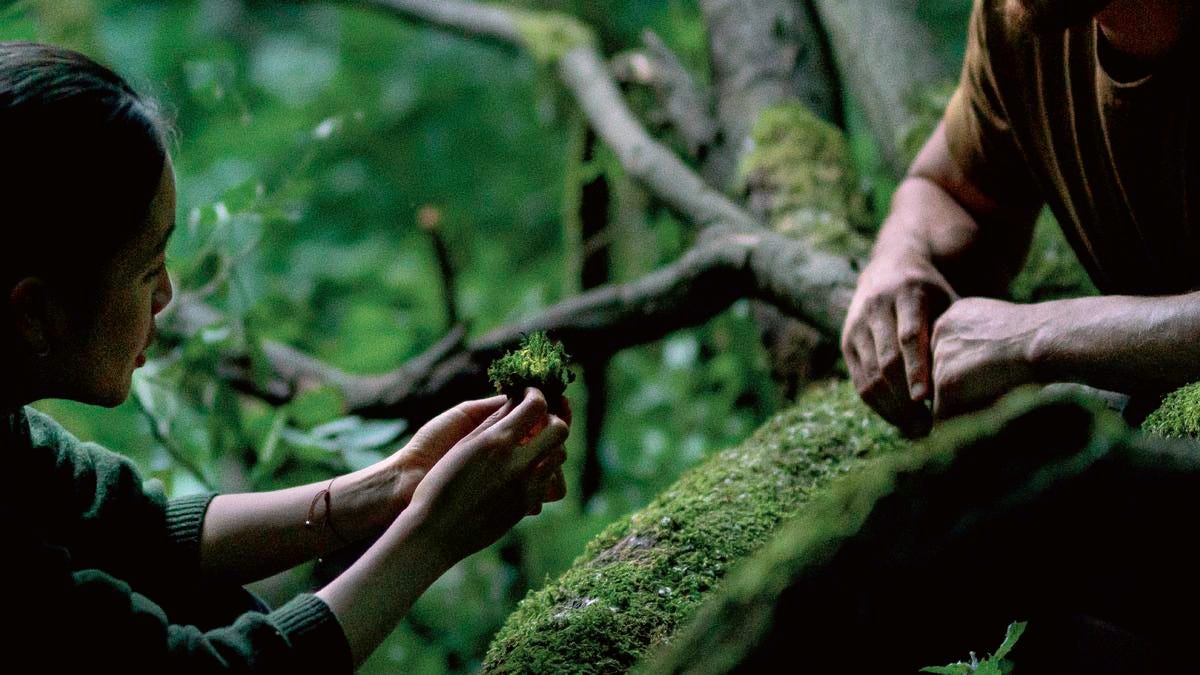
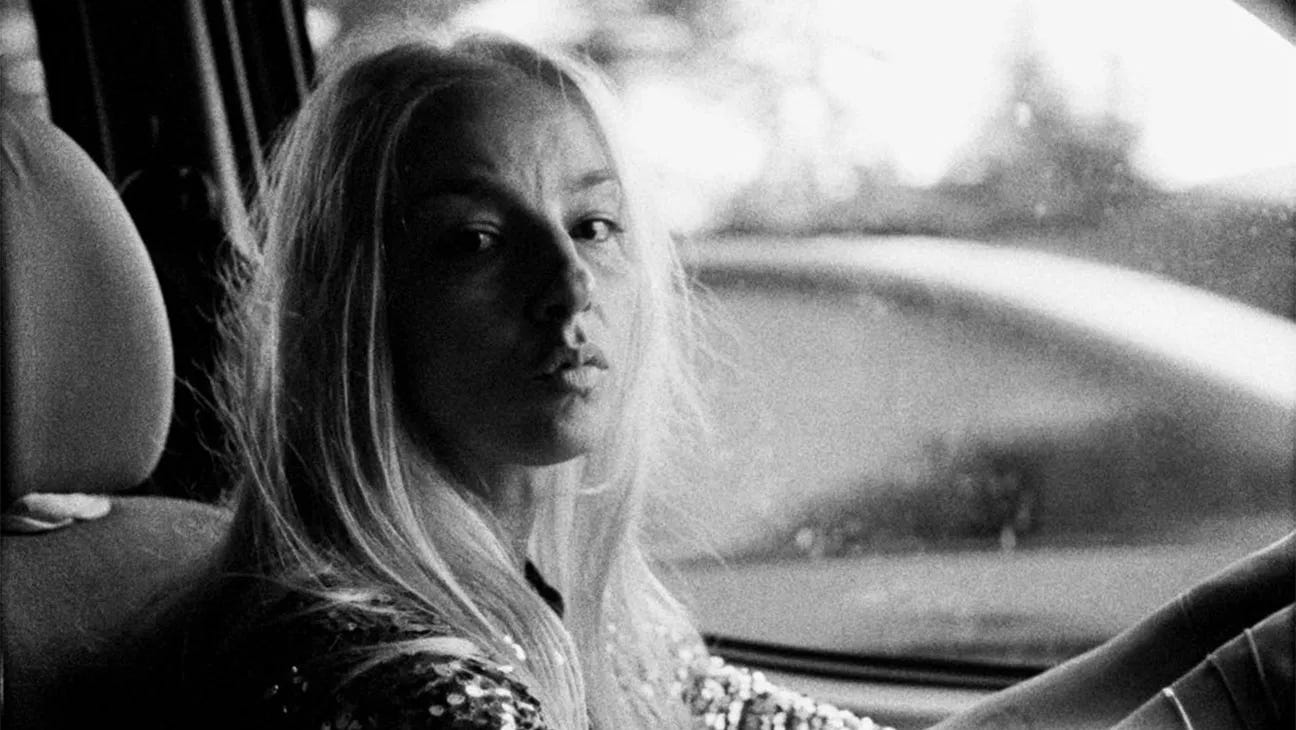
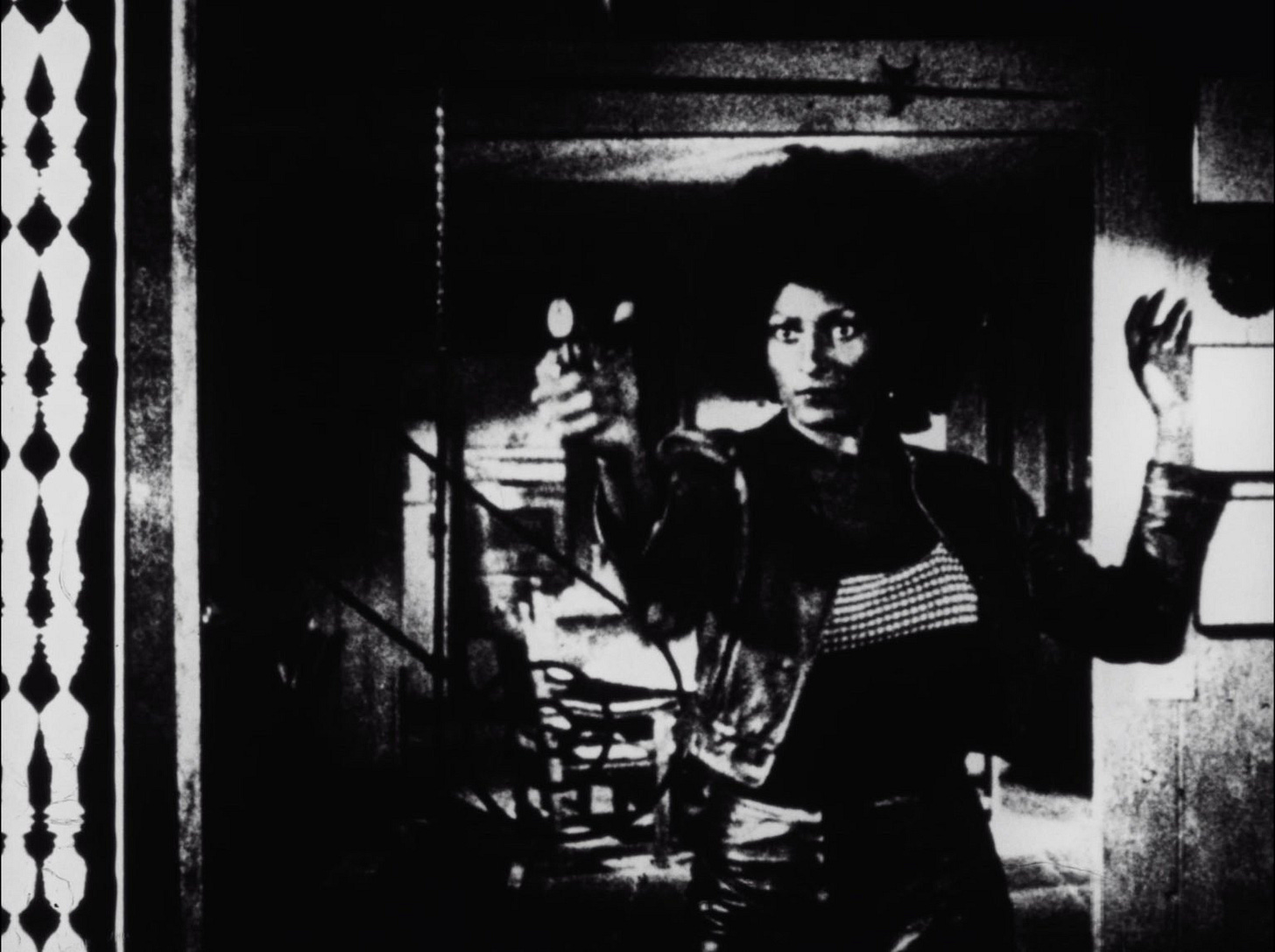



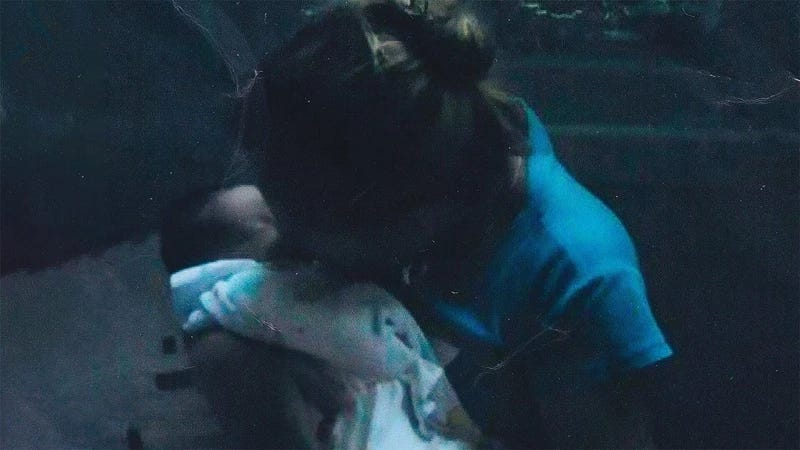
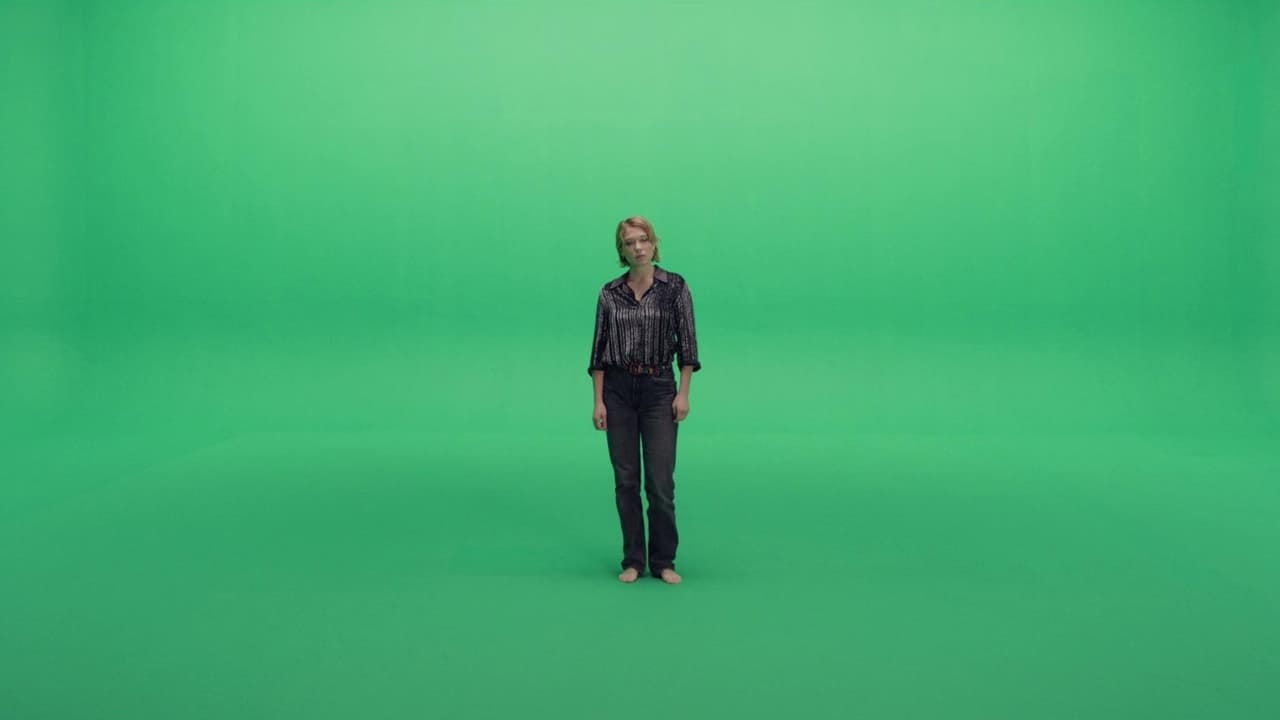

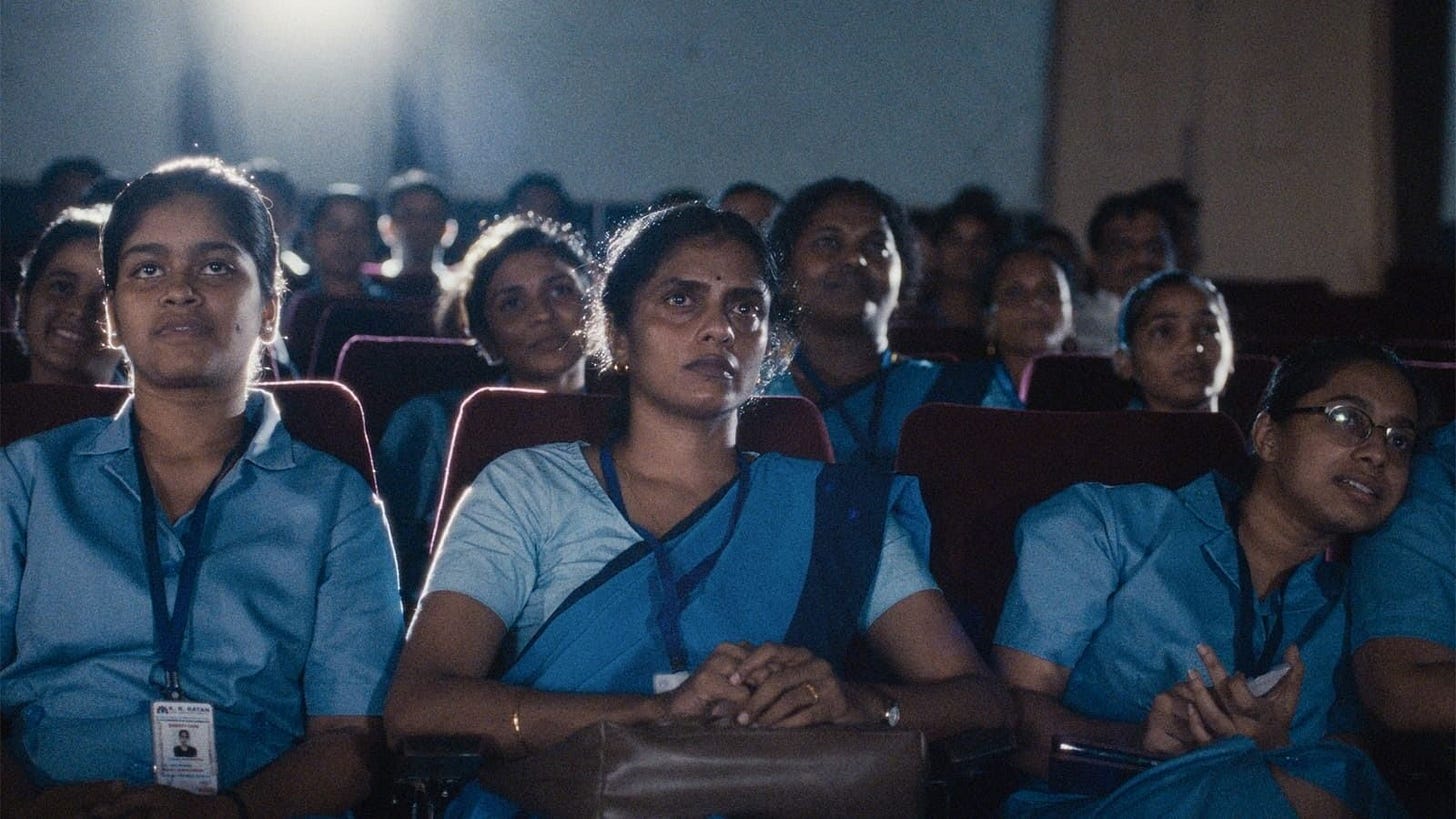

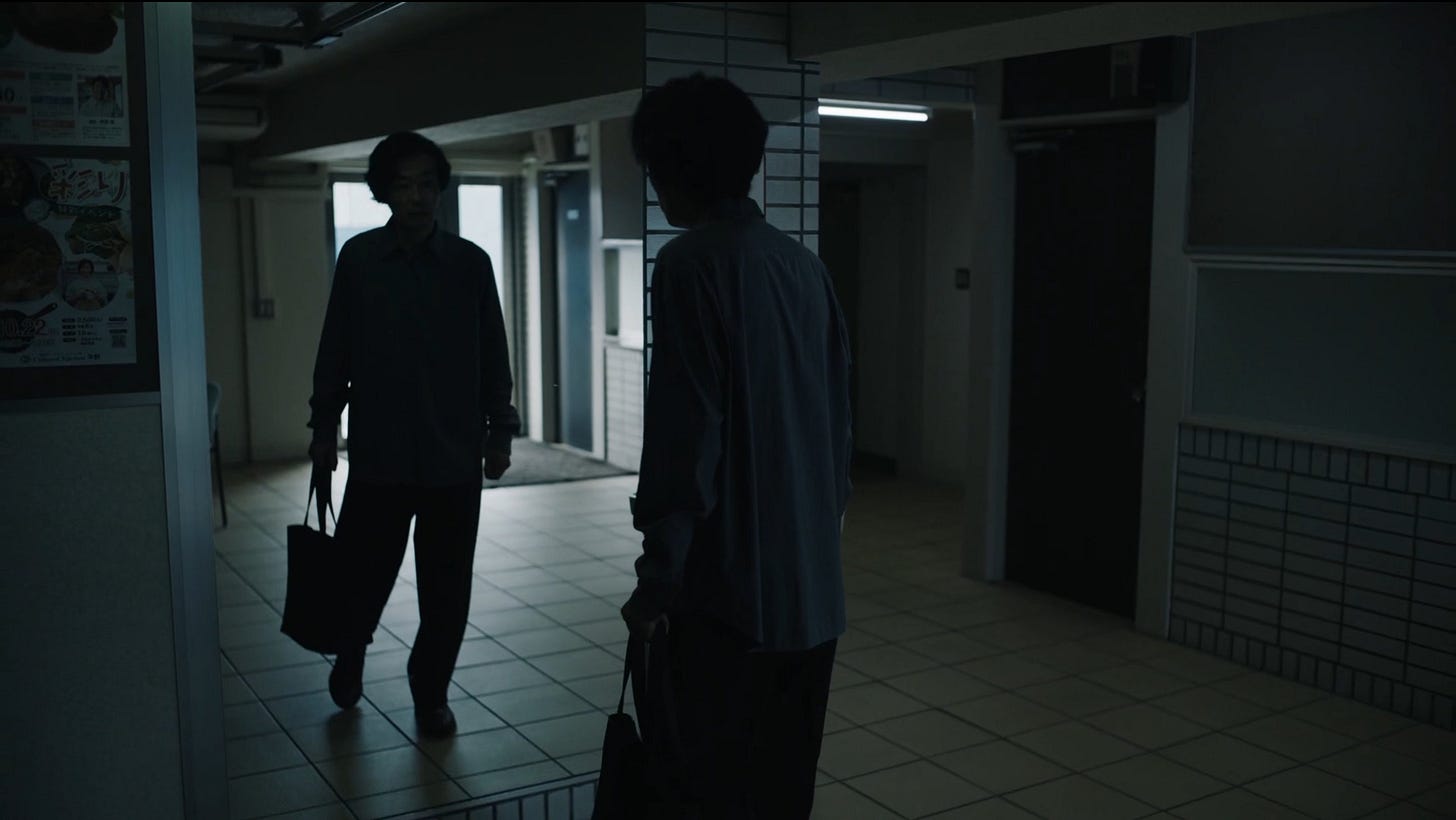


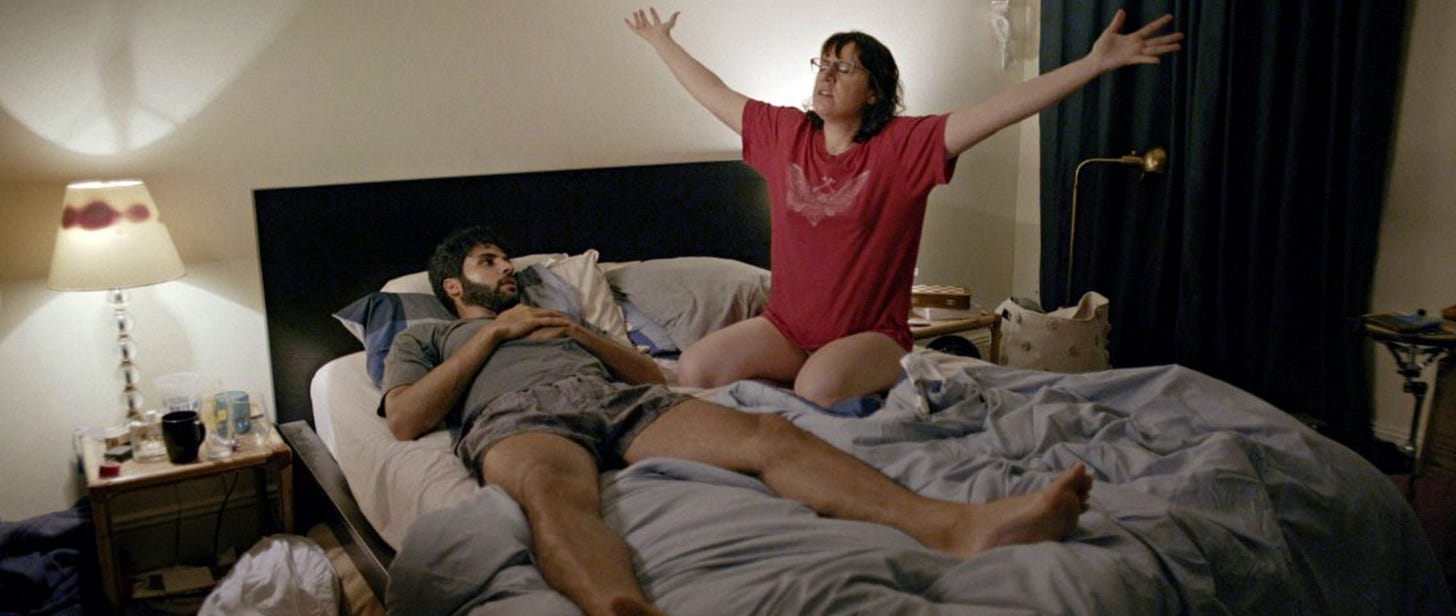


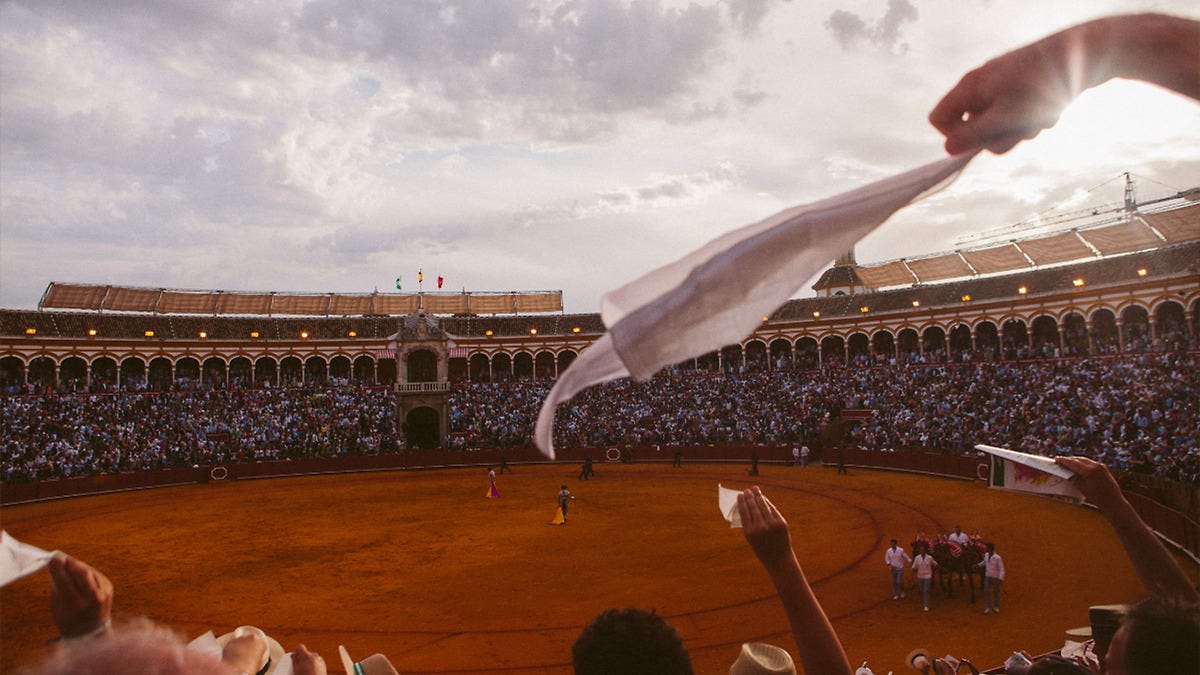




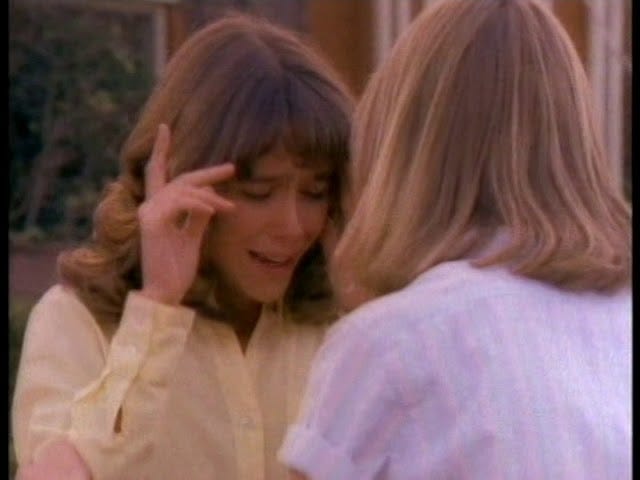

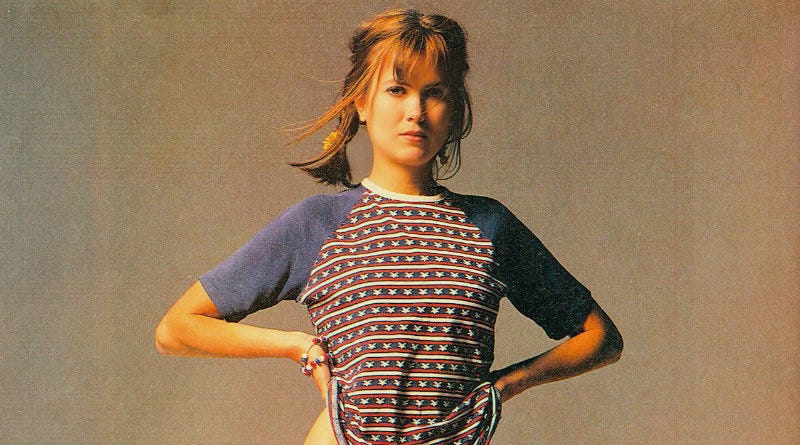
Great recommendations! I'm renting all the ones I can find on iTunes to get us through the next couple weeks during which we need some serious distraction given the awful political situation! Juror #2, dir. Clint Eastwood was like the worst movie I've seen all year! Trap may come in second as the worst.... but there are a lot, a lot, of bad, mediocre, inane movies coming out! Again, your recommendations for the best, Ryan, are spot on!